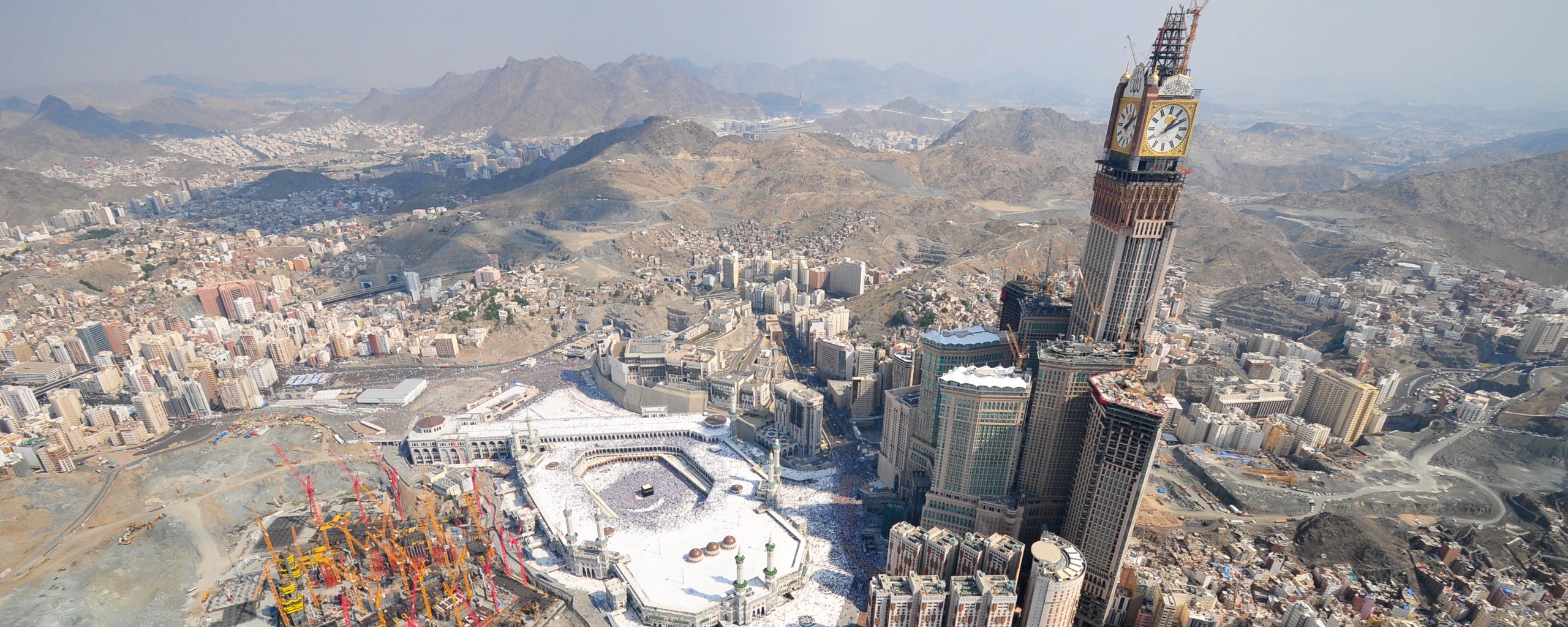

Darren’s fantastic “A Visual History of the Future” series is nearly over (alas). As a kind of coda, I’m going to use this week’s One Last Thing to talk briefly about what comes next. Not in the series, but for cities.
Cities are everywhere in “A Visual History of the Future,” and that isn’t surprising. Designing and shaping the urban environment is one of the most direct and immediate ways of effecting social change. You can do a lot to people by controlling the spaces in which they live and work and play–just look at how notorious New York City urban planner Robert Moses baked racism into the fabric of “his” city.
In “Visual History,” Darren looks at a number of different ways that cities were used by illustrators and designers to indicate The Future. Sometimes it was the background to the future, sometimes it was the future itself. Either way, if imagined cities are an easy shorthand for the world of tomorrow, I think it also follows that we can use the ways we talk about the cities that are already being built–the cities that are just now emerging from drafting boards into reality–as a way of better understanding the world that we already have. We’re all biased towards certain kinds of buildings and architecture, certain kinds of cities, that affect how comfortable we are with those futures.
Maybe the most intuitive example of this that I’ve experienced was visiting the Great Wall of China a few years ago. I was in Beijing for a three-day layover, and decided to do the tourist thing and take a bus to Badaling, about 50 miles from the capital. It’s a section typically swarming with tour groups, next to a large museum, several hotels, and a vast asphalt lot for all those tourist buses to park on. There’s a cable car, too. It’s a very thoroughly-restored section of the Wall; it looks brand new in places. And it was everything I was conditioned to expect from a theme park in Europe or North America, not a world-famous historical site.
But then, that’s because I have expectations of what “history” looks like. Ruins, preserved in the state at which somebody decided that it shouldn’t become more ruined. There are exceptions–plenty of European castles still operate as homes, for example–but I was alienated by this approach to historical preservation. I, rationally, know that feeling underwhelmed by the Great Wall of China is churlish in the extreme, but that’s how I’m culturally primed to understand authenticity in relation to buildings. Most of us do this when it comes to new buildings, new cities, new futures of the built environment. The ways in which we interpret things like “authenticity” and “beauty,” even in something like a wall, is entirely relative.
Anne Applebaum wrote about this for Slate back in 2011 that has stuck with me ever since. She writes about visiting Dubai and being taken aback by how “incurably vulgar” the city looks to her “jaded American eye”:
“There is almost no evidence of history or of local culture. International brand names are plastered everywhere, from Applebee’s to Rolex, and everything is imported, from the raw fish at Nobu to the coffee at Starbucks. In Abu Dhabi, the emirate down the road, they’ve even bought the names Louvre and Guggenheim and are constructing museums to match.”
She then points to accounts that Europeans wrote of visiting the new great cities of North America in the 19th and early 20th centuries. Europeans were baffled to see distinctively European iconography and design replicated on brash new American skyscrapers. Abu Dhabi getting a branch of the Louvre is no stranger than paintings by the Dutch Old Masters being in the collection of the Frick. Reactions to the immense inequality between a wealthy, ethnically homogenous elite, and a poor, ethnically diverse working class, are also strikingly similar to those of Westerners gaping at the Burj Khalifa while bemoaning the nearby slums.
The Americans took not just European style when they built their country, but they imported European commercialism, capitalism, and colonialism. It makes sense that building a world-class city today from scratch would involve just as much picking-and-mixing from “real” cities–and that doing so will, on first glance, appear entirely inauthentic to the outsiders whose cities are being imitated.
In China, this is happening in the most exacting way, with near-literal copies of European towns and landmark buildings in new Chinese districts. These buildings might be “inauthentic” or “fake,” but if they’re copying buildings that people on the other side of the world love so much they’ve preserved them for centuries”¦ so what? Those buildings must be doing something right. (And that’s not forgetting how many “authentic” European buildings were rebuilt post-1945, Great Wall-style.)
“Like the Europeans before me, I resist the idea that Dubai heralds the civilization of the future,” Applebaum writes at the end of her piece. “But I have to concede that in some senses it might. “¦ There have always been people who dream of escaping from their culture, who long to forget their history, and who are content to live without the past. And now, in Dubai, they can.”
Bearing all this in mind, the question, I think, is simple: Which cities get to be “the future”? After all, the neon-lit cities of East Asia (particularly Tokyo) have been allowed to be “the future” for decades now, as the direct inspiration for the cyberpunk genre. Why Tokyo, and not the techno-Islamic collage that is contemporary Mecca, for example? Why is only one of these instantly recognizable as the future-already-here, and the other, well, “cultural vandalism“? (It’s also going to be fascinating to see whether the success of Black Panther will lead to the mainstreaming of afrofuturist cityscapes within science and other popular fictions.)
We’ll find some kind of answer with time, if nothing else. There’s a short film that I found recently, a promo trailer for a new book on Soviet Modernist architecture in Ukraine, that gets to something fundamental here. In it, one of the co-authors, Ievgeniia Gubkina, talks about how different generations of Soviet Ukrainian architects kept trying to start from scratch; each new generation tried to build its version of a future on its own blank canvas. The immediate past was dismissed, but older history–heritage–was something worth engaging with because of its survival, and the perspective that time provided:
“Today’s architects do no engage in dialogue with yesterday’s ones, and they, in turn, did not appreciate the architects of the day before. “¦ An interesting pattern is produced. We are not willing to speak with a generation of fathers and mothers, but always turn to the legacy of grandfathers and grandmothers. Today we are talking to the generation of the Sixties, while at their time they were talking to the Constructivists of the Twenties and Thirties.”
You could say this is how the process of cities rising and falling works, too. The first large, popular campaigns to preserve Victorian-era buildings in the West were led by the grandchildren, not the children, of the Victorians. The same is happening now with mid-20th century brutalism, both in the West and in the former Soviet bloc.
Poor 1980s postmodernism will still have to wait its turn to be celebrated in the same way, but I know that my gut instinct, when it does, will be the same surprise that my parents feel when they hear someone on the TV news defending a “concrete monstrosity” from their youth. 1980s PoMo is tacky and gaudy! It can’t be worth saving! Yet it will be, because it–just like Dubai–is already the future, just as Tokyo has already been for 30-plus years. Whether we can see those futures as obviously futuristic as the illustrations that Darren gathered for “Visual History,” well, that remains to be seen.


How We Get To Next was a magazine that explored the future of science, technology, and culture from 2014 to 2019. This article is part of our Metropolis section, on the way cities influence new ideas–and how new ideas change city life. Click the logo to read more.
